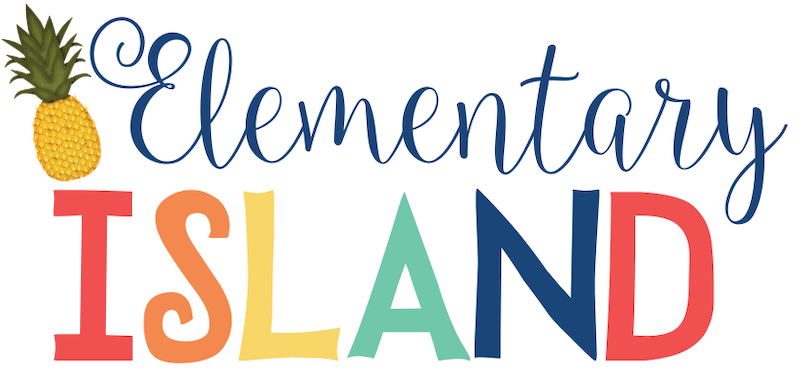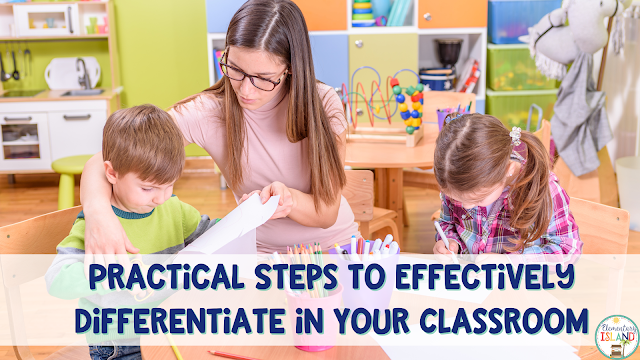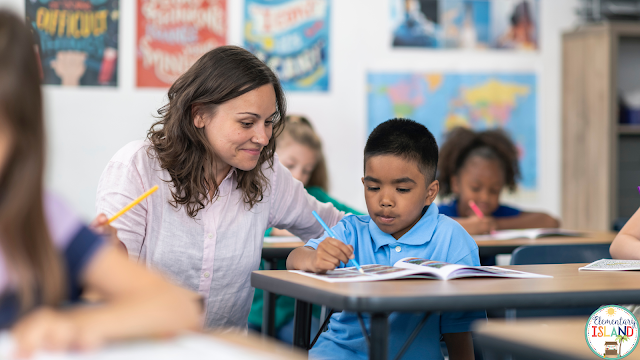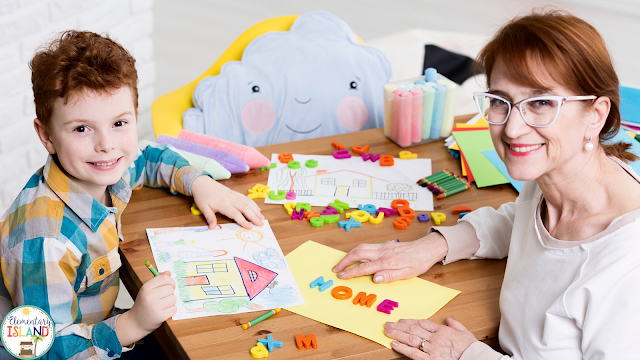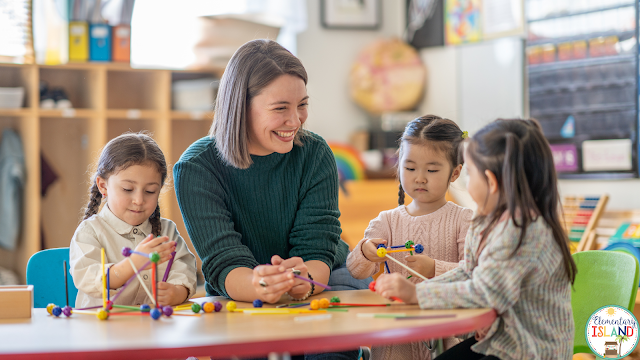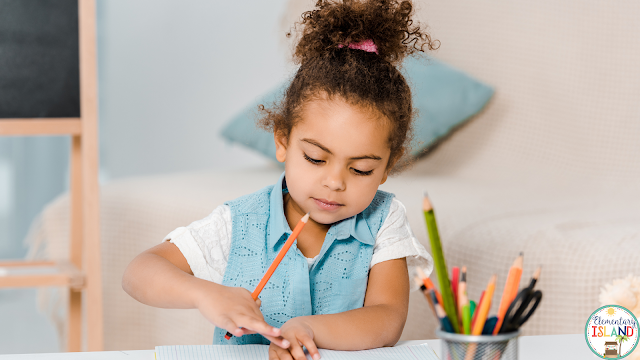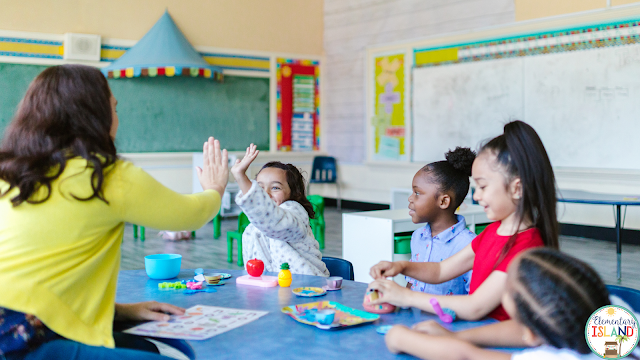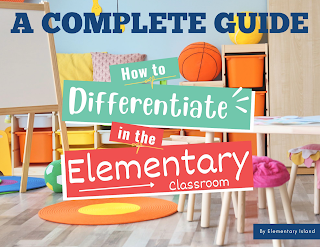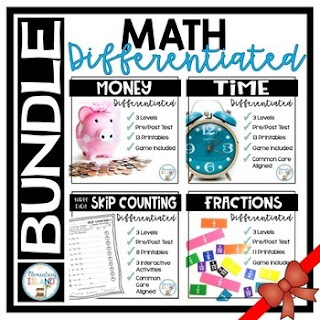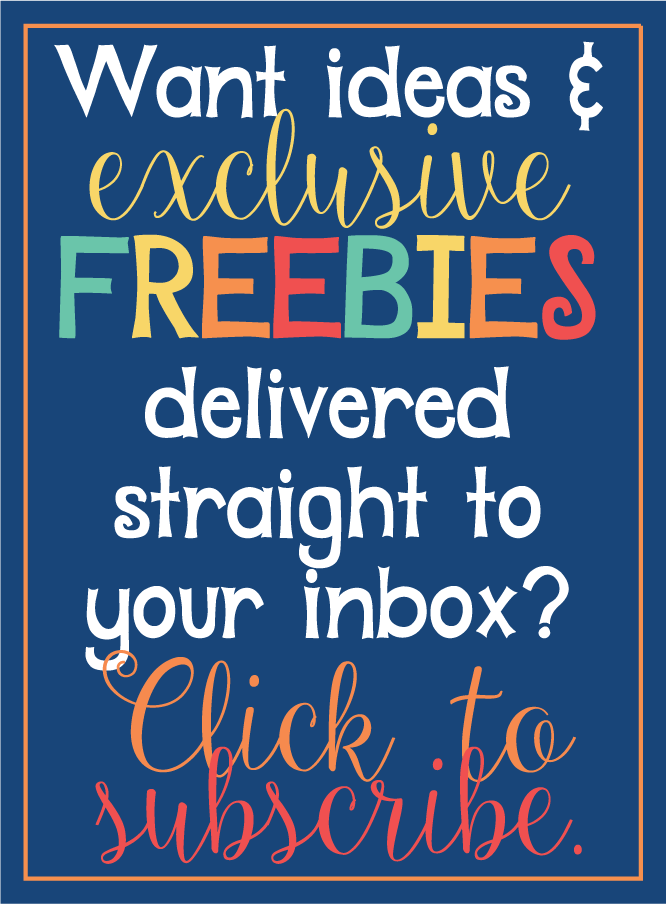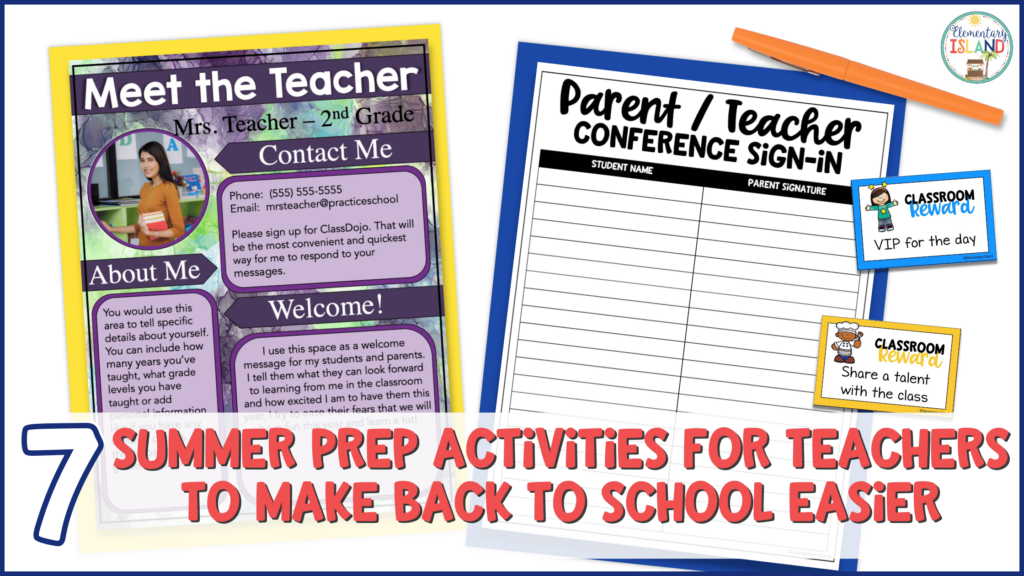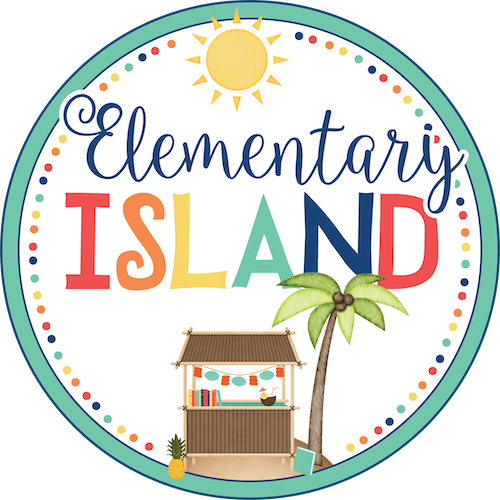Differentiation has been a hot topic in the classroom for a while now. But how do you know you are effectively differentiating for each student in your classroom? It can feel overwhelming to think that you have to plan individual lessons or activities for each of the 25 to 30 students in your classroom. Differentiation is not only doable but can end up being one of the most rewarding things you can do for yourself and your students.
So, What is Differentiation?
Differentiation is all about tailoring instruction to meet the individual needs of each of your students. That means using specific content, processes, products, or learning environments to help meet the needs of the individual.
Because differentiation has been around for a while now, thankfully there are a lot of us who have already been through the trial-and-error phase. I can tell you from experience that differentiation is not about developing overly complicated lesson plans for each and every single one of your students. That would be bananas! However, what you can do is find out where your students are and meet them there.
It may be that you have a group of students who need a little more practice with CVCe words. Okay, put them in a small group and give them differentiated instruction with a fun center activity, worksheet, Boom Card activity, or anything else that would help give them the extra skills practice they need to master that skill. At the same time, you may have a group of kids who have mastered that and are ready for 3 letter blends. Get those kiddos moving in that direction.
How do I Start Using Differentiation in my Classroom?
Follow these steps to start using differentiation in your classroom. It won’t require a lot of extra planning and prep on your part, and before you know it many of these steps will become second nature. And, the best part is, I have tried these myself, so I know they work!
1. Understand the Concept
Differentiation is the practice of adapting instruction to meet the individual needs of students. That means it involves providing multiple pathways for learning. It doesn’t mean you go crazy and plan 25-30 unique lessons.
Consider your students’ diverse backgrounds, abilities, and interests to help you determine how to best meet them where they are. That way, you can be sure you are giving them the right materials and resources to help them feel successful.
2. Identifying Student Needs
Teachers should assess and understand the unique needs of their students. This includes understanding each of their unique learning styles through observation or surveys. If you have a student, for example, who loves to color and does best when being creative, consider a color-by-code activity when introducing a new math concept.
Have a student who learns best when singing? Ask them to come up with a “rap” to help them with counting by 5’s. Not only will this help them practice and learn, but they can share it with others which will in turn build their confidence and maybe help another student learn how to count by 5’s. Pretty cool right?
Assessing your student’s learning styles, readiness levels, and interests will go a long way in helping you tailor instruction to meet individual needs effectively. I’ve got a free Differentiation Guide that includes a student interest survey to help you with this.
3. Flexibility in Lesson Planning
This is one of the little-known benefits of differentiation in the classroom. While differentiation does require you to create flexible lesson plans, it also means you get to think outside the box and bring in some really fun and exciting lessons to your classroom.
Meeting the needs of your diverse learners means you can provide various resources, materials, and activities to support each of your students. This will help keep them engaged in learning no matter the subject you are covering.
4. Varied Instructional Strategies
One of the amazing things about teachers is we are able to utilize a range of instructional strategies in our classrooms. Use that to your advantage when planning your differentiation activities this year. You can use so many different instructional strategies to address different learning preferences and abilities. Think about the 5 senses when you do this. When you do this you are covering most of the learning styles you will find in your classroom. By incorporating things you can see, hear, and touch you can tap into a variety of learning styles. And sometimes. . . you will have the perfect lesson for adding in smell and taste too!
Not sure where to start? Check-in with your grade-level team and have a brainstorming session. More heads are better than one. Maybe you can come up with a list of activities perfect for different levels of learners in your classrooms that you can all use when needed.
You can use differentiated instructional strategies in the following ways:
- Small group instruction
- Cooperative learning
- Technology integration
- Hands-on activities
5. Assessments
In order to differentiate, you need to know where your students are, what they are excelling at, and what they are struggling with. Assessments are the perfect way to do this. But set aside that picture in your mind of standardized tests. There are many informal ways we can assess our students on a daily basis.
Don’t underestimate the power of your observation in day-to-day classroom activities. Your questioning during whole class lessons is also a great way to get an idea of where students are. Add to that some independent practice activities and/or a quick exit ticket and you can learn a lot about each of your students. Use what you learn to differentiate! You can use this information to help you group students based on skills and concepts they are struggling with. Then, it’s as easy as grouping those students together for some varied instructional strategies like those mentioned above.
Understanding your students’ progress, identifying areas of strength, and areas that need further support will help you make instructional adjustments accordingly, and are the key to successful differentiation in your classroom.
6. Individualization and Grouping
Now that you have gathered information and can identify areas where students need help or need a little more challenge – you are ready to decide how to do that. Here’s my rule of thumb – if the vast majority of the class is struggling – reteach to the entire class. If there is a handful of students struggling or needing a challenge, put them in a small group together. If there are just 1 or 2 students struggling, some 1-on-1 instruction and practice can be very effective. And don’t forget about that student who needs a little extra challenge. Differentiation is not just for strugglers.
Differentiation can involve both individualized instruction and group work. You can use formative assessments, informal assessments, or even class work-based evidence to help you group students. Then, it’s easy for you to group students or provide one-on-one support to individual students or small groups based on the student’s needs and goals. Easy Peasy!
7. Classroom Environment
It may sound crazy to think that differentiation can help build a positive classroom environment. But, I can tell you from experience, that’s exactly what happens! When you meet your students where they are, you will find more engaged and focused students in your classroom.
When your students feel like their needs are being met, they are not feeling overwhelmed by concepts they have not yet grasped, or they are working with other students collaboratively, you will find a positive and inclusive feeling classroom environment.
Having students feel respected and accepted, being able to express themselves, and feeling that it is safe to take risks are natural effects of differentiation and some of my favorite things to see in my classroom.
8. Ongoing Reflection and Professional Development
Did you know differentiating for your students is good for you too? It is! When you differentiate for your students you are required to continuously reflect on your instructional practices. This can lead to professional growth throughout the year. And, you can share that learning with others.
A school is like a village and nobody is there to hoard information. We all know how important it is to keep trying new things and differentiation in the classroom is one of the best ways to keep learning yourself.
Not sure where to start? Take a professional development course on differentiation with some colleagues. Then, share your learning in a staff meeting. Jump at the opportunity to collaborate with other educators in your building whether they are in your grade level or not. Or, just reach out to a teacher friend and ask for advice on how to help a specific student. All of these put you on the road to differentiating for your students.
Grab Your FREE Differentiation Guide
Grab this FREE guide that includes specific instructional strategies for each of the core subject matters, a student interest form, and more! It’s the perfect resource to keep in your teacher binder or with your lesson planning supplies so you always have practical tips and ideas right at your fingertips.
Differentiation is Here to Stay!
Whether you are a new teacher or a seasoned veteran, differentiation is sure to become one of your favorite ways to help each of your students feel successful in your classroom.
By understanding the basics of differentiation you can effectively implement differentiation in your classroom. This will help to promote student engagement and success, and create an inclusive learning environment that meets the needs of all students!
If you are ready to jump into differentiation, but want some activities that are already done for you then check out his Math Differentiation Bundle. It has a variety of differentiated activities to help you teach money, time, skip counting, and factions.
Save These Practical Differentiation Tips and Ideas
Be sure to save these differentiation ideas to your favorite classroom Pinterest board today! That way you can quickly come back when you are ready to up your differentiation game.
